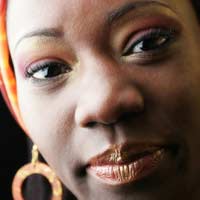The Ears and Culture

For most people in the UK the ears exist purely to assist us in the ability to hear sound, for some of these people they also act as part of our aesthetic make-up and contribute to the way in which we present ourselves.Over the years the general public has extended these aesthetic factors and added jewellery adornments that compliment our clothes and give us freedom to express ourselves. The use o earrings however is not the only type of ear culture that has evolved as other cultures pay a lot of attention to the ears and ear jewellery and these can often contribute to an large part of people’s history and heritage.
The Development Of Ear Piercing
Ear piercing dates back a long way in history, even as far back as biblical references. They were initially won as the people and cultures of the era believed that the soul could be purified by allowing good spirits in and bad spirits out of the body, or as a label like that or the slaves who were branded in this way.Over the years ear piercing has become part of religion, culture, sexuality, conformity and fashion.Ear Expanders
In some cultures, African in particular, the use of ear expanding devices is a usual and frequent part of growing into adulthood.As young teenagers the population are encouraged to make holes in their lower ear lobe much the same as western piercing techniques, only instead of simply inserting a small earring, the hole is filled with a disc. Over the years as the lobe accommodates the disc a newer and larger disc is inserted allowing the tissue to stretch further until a very noticeable hole is left in the ear lobe. Although this can appear quite strange to many people who are not used to these practices, they are commonly used in many countries and can allow the person to display many of their personal attributes in this way.The size of the hole and/or disc worn may give reference to heir social status or personal circumstances.This practice dates back many years in history and is a large part of their culture.Large Or Very Obvious Ears
For some people, especially those with large or very obvious or protruding ears, drawing attention to them ears is not something that they consider. Many of these people actually seek surgical corrections that aim to make the ears less noticeable and the culture of piercing or attracting attention to the ears may fill them with horror as they are so conscious of their own ears.There are ways of surgically correcting the ears but this does often involve the use of anaesthetics and invasive and complicated operations that may not guarantee any huge difference to the patient.In many cultures and through their history, large ears have often been regarded as very becoming and a symbol of status whereas in the western world large ears have frequently been the focus of ridicule and teasing, occasionally leading to bullying. It is very strange how the subject can be regarded so differently between countries and cultures.The ears are thought of in very different ways between different cultures; in some they are regarded as symbols whereas in others they are often the centre of mockery and derision.Adorning the ears with jewellery is also a very common practice common to many countries and cultures but the nature of the jewellery can vary a lot.Depending on which country you live in and what cultural practices and religions you follow will usually dictate how much focus your ears are given in society.
- The Impact of Flight on the Ears
- How the Inner Ear Helps You Walk Straight
- Ear Trauma: Causes and Effects
- What's the Point of Earwax?
- How Your Genes Shape Your Ear Lobes
- How Well Do You Know Your Ears?
- What Has Sea Sickness Got to Do With the Ear?
- Living with a Cochlear Implant
- Will Gene Therapy Reverse Deafness?
- Dangers of Workplace Noise
- Can Earphones Damage Your Hearing?
- Ear Piercing And Health
- How The Ear Works
- How to Protect Your Ears
- Looking After Your Ears


Re: Types of Ear Surgery
My child is born with deaf. So what should i do. Which treatment should i take to my child
Re: How Your Genes Shape Your Ear Lobes
My 2 month old has one free earlobe and his other ear has a half attached earlobe why? Should I be concerned?
Re: I Feel Dizzy and My Ear Itches: What Does it Mean?
I have noticed my ears are producing more sticky staff, itching and in the middle of last year I…
Re: Can Ear Wax Be Removed by Vacuum?
Vacuuming caused a 30% hearing loss. Don't allow it. Find a dr or audiologist who avoids it.
Re: Cysts and Tumours in the Ear
I had a pollock in my ear. can they regrow ?
Re: Grommets and Your Ear
@Ella - I'm afraid we can't give direct medical advice. The best option you have is to visit your GP and hope he/she will be able to help…
Re: Grommets and Your Ear
I had grommets when I was 2 and 5, a few weeks ago I found out I have scarring and 1 of my grommets are still in my ear meaning I had it in…
Re: Can Ear Wax Be Removed by Vacuum?
I had an ear wax removal procedure done at the Loma Linda, Ca Va facility. When the tech was vacuuming out the wax in my…
Re: Cysts and Tumours in the Ear
@CarrolA - I have no knowledge of your condition or what it might be. But if you want a quicker appointment, and peace of mind,…
Re: Cysts and Tumours in the Ear
I woke up one morning about five weeks ago with a feeling that my ear was blocked. A strange additional symptom is that every word…